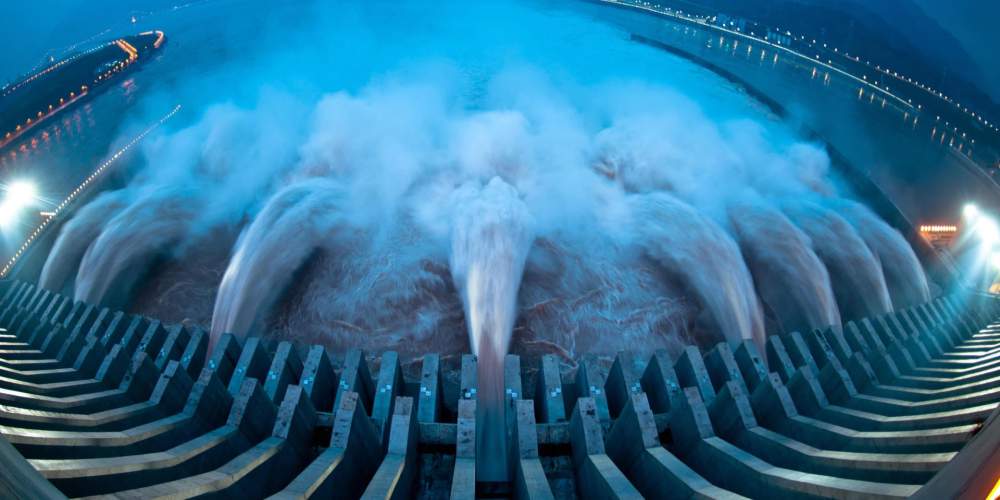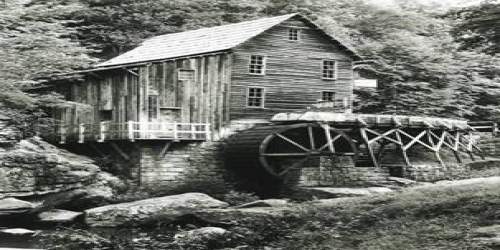Read Time : 2 Minutes
Financial Benefits of a Hydroelectric System
Alongside the obvious ecological benefits, there are various ways in which your hydroelectricity generation system can earn and save you money. It’s one of the main reasons that a lot of commercial concerns are beginning to turn to the technology as a viable, and profitable alternative to simply taking power off the grid.
The FiT has been discontinued by the UK Goverment. The content on this page is for historical referrance.
Hydroelectricity Investment Information
It is difficult to calculate the precise revenues that can be achieved given the large range of factors, such as the size and planning and development cost of the installation, and the fact that each project owner will use their energy in different ways. The table below presents a rough estimate of how much revenue you can expect your hydro system to generate annually as well as when you can hope to break even:
| System power | Initial system cost | Approx. annual income (less running costs) | Approx. breakeven point |
|---|---|---|---|
| 5kW |
£50,000 |
£5,000 | 10 years |
| 25kW |
£200,000 |
£25,000 | 8 years |
|
50kW |
£350,000 | £45,000 | 7 years, 8 months |
|
100kW |
£500,000 | £95,000 | 5 years, 3 months |
| 250kW | £1,000,000 | £160,000 | 6 years, 3 months* |
| 1MW | £3,000,000 | £450,000 | 6 years, 8 months |
*The apparent anomaly in breakeven points here can be attributed to the lower FiT rate available to larger systems. The above figures do not take into account potential savings from using the energy produced in your own home(s) or business. The total saving could therefore be potentially much higher than these estimates. As noted already, the energy return from hydroelectricity systems is much more calculable than it is for other sources of renewable energy such as solar PV, as it is less dependent on variations in the local weather. It is difficult to determine the potential revenue offered by tidal hydro systems given their scarcity. Compare prices from local companies fast & free Enter your postcode to compare quotes from leading professionals. We promise to keep your information Safe & Secure. Privacy Policy
COMPARE PRICES FROM LOCAL INSTALLERS
Feed-in Tariffs for Hydroelectricity
Feed-in Tariffs (FiTs) are government subsidies which allow you to receive money for energy generated by your renewable energy installation that is fed to the National Grid. This is referred to as the generation tariff. Along with lower energy bills, FiTs present the principal financial incentive for those who install green energy systems in homes, organisations, communities and businesses. FiTs allow to you receive money (tax free for non-business installations) from your energy supplier for every kilowatt hour (kWh) of electricity generated by your low-carbon energy installation. FiTs also provide income for every unit of surplus energy that you do not use and export back to the grid. This is referred to as the export tariff. Off-grid systems are not eligible for the FiT export tariff, though they may still claim the generation tariff. For projects such as community installations, none of the electricity produced is fed directly into local homes but instead is exported to the grid and the resulting profit is then fed back into the community. NB. For businesses, FiT payments count as income and will be taxed accordingly. Despite their somewhat misleading name, Feed-in-Tariffs pay you for all of the energy that the hydroelectric system produces, whether you consume it yourself or sell it back onto the national grid. The current FiT generation rates (valid until 31st March 2014) for hydroelectricity generation are as follows:
System output/capacity |
Feed-in generation rate tariff |
|---|---|
|
<15kW |
21.65p/kWh |
|
15kW-100kW |
20.21p/kWh |
|
100kW-500kW |
15.98p/kWh |
|
500kW-2MW |
12.48p/kWh |
|
2MW-5MW |
3.23p/kWh |
The export tariff for all system sizes (and indeed all eligible renewable energy generation installations) is 4.64p/kWh. A table of FiT rates for other renewable energy sources is available on the Ofgem website. The rate at which energy is exported back onto the grid is dependent upon your installation’s output and your energy consumption. NB - Feed-in Tariffs are not currently available in Northern Ireland. FiT rates are subject to change and only apply to systems installed before 31st March 2014. Tariffs are reviewed periodically by the Department for Energy and Climate change (DECC), but are locked in for a period of 20 years (the tariff ‘lifetime’) from the installation of the hydro system. FiT rates are also linked to the Retail Price Index (RPI), so they will rise with inflation. For more information about the Feed in Tariff scheme, visit the Department for Energy and Climate Change website.
Renewables Levy Exemption Certificates
Another way of saving money with renewable technology for businesses is to obtain a Renewables Levy Exemption Certificate (Renewables LEC). Renewables LECs bypass the need to pay the Climate Change Levy (CCL), which is a tax on energy products (electricity, natural gas, LPG, coal) used in businesses. Businesses which use these energy sources currently pay the CCL at a rate of £5.24/MWh used. If you use the energy produced by a renewable system (provided that the system capacity is between 50kW and 5MW) in your business, you may be eligible for an LEC, saving you the £5.24/MWh CCL. It is also possible to sell the certificates back to energy suppliers. Charities and non-business organisations do not need to pay the Climate Change Levy. More information on LECs is available on the Ofgem website. Selling Shares for Community Hydroelectricity Where community schemes are starting to benefit by hydro projects is when local people can buy shares which then yield an individual profit in addition to the profits made from the FiT that is fed back into the community. Find out more about community hydroelectricity.
Find a local installer
Welcome to the biggest directory of UK renewable energy companies





 Is Hydroelectricity Generation Worth it
Is Hydroelectricity Generation Worth it


